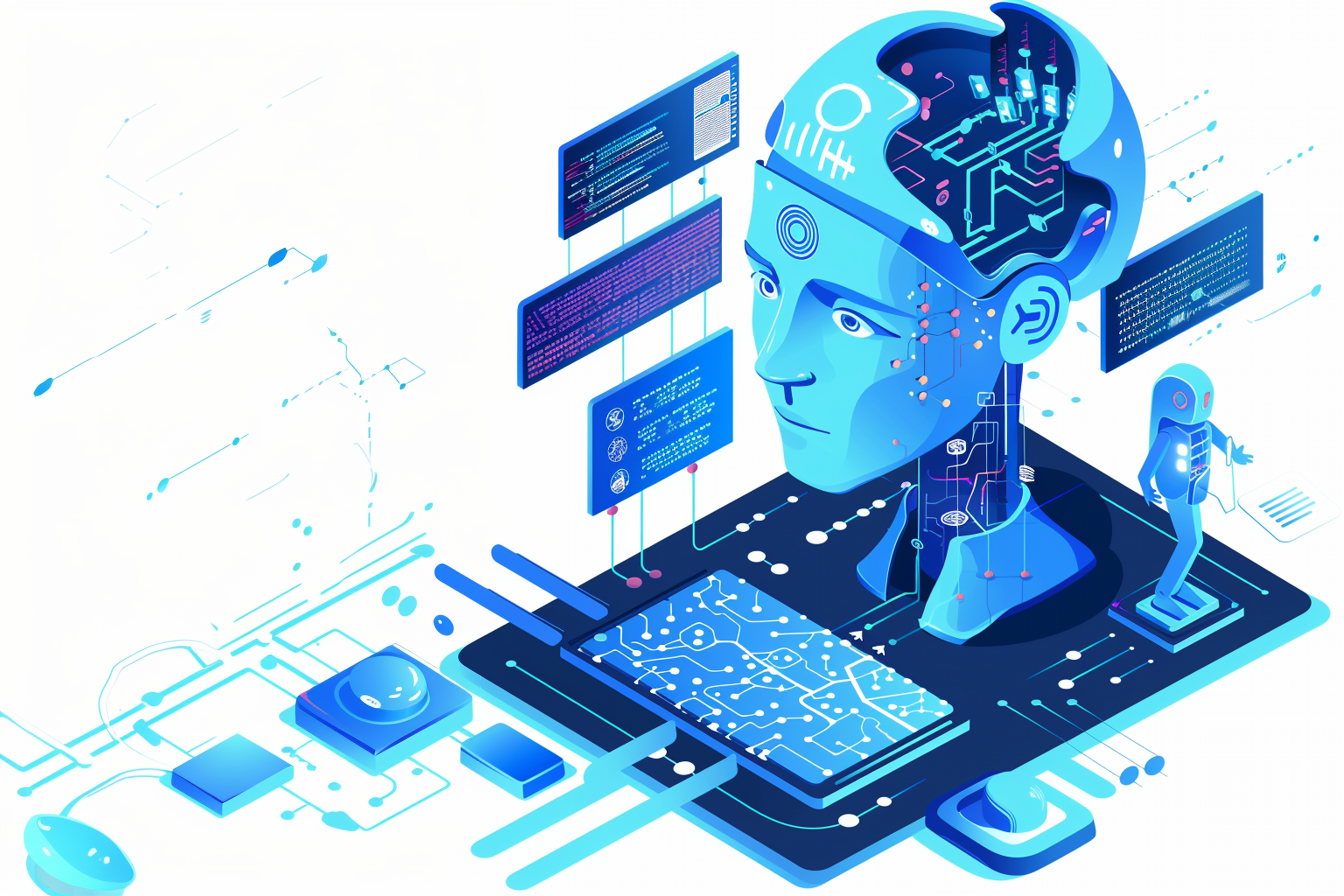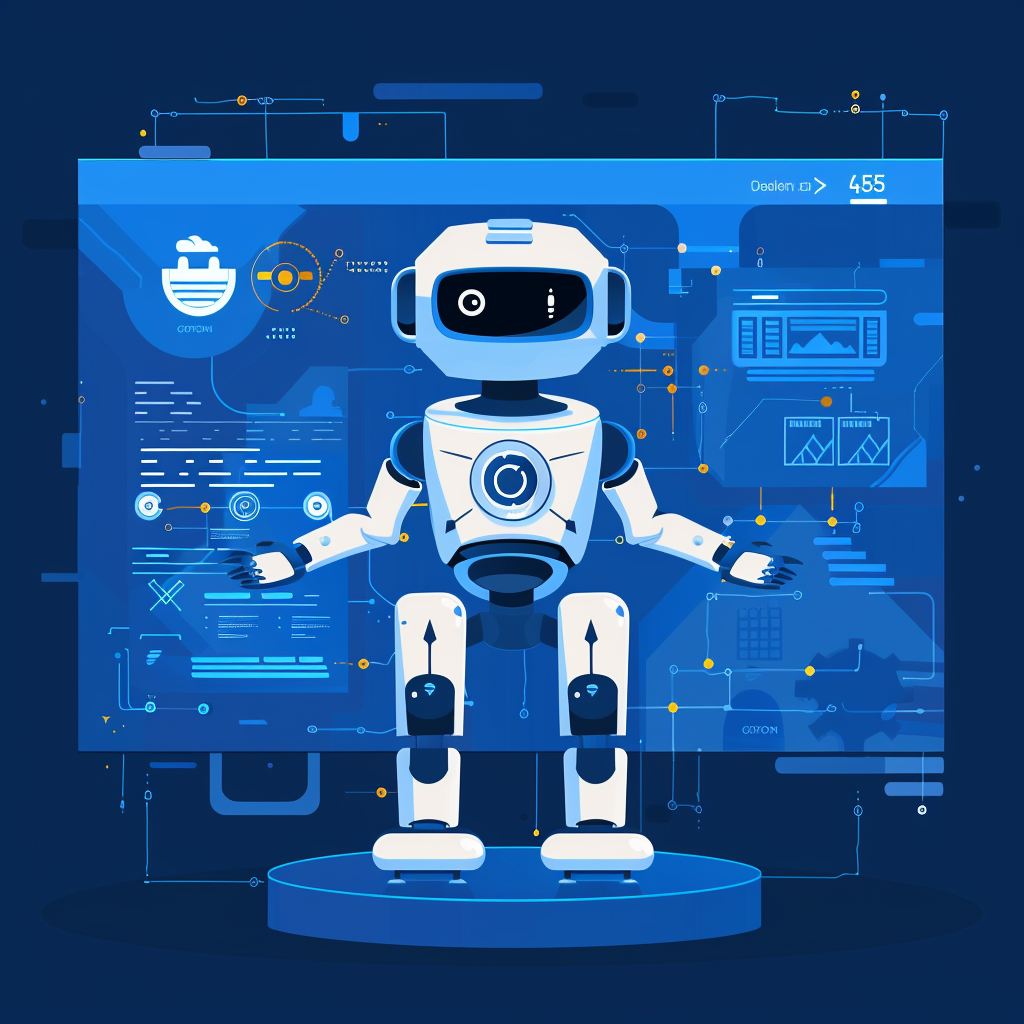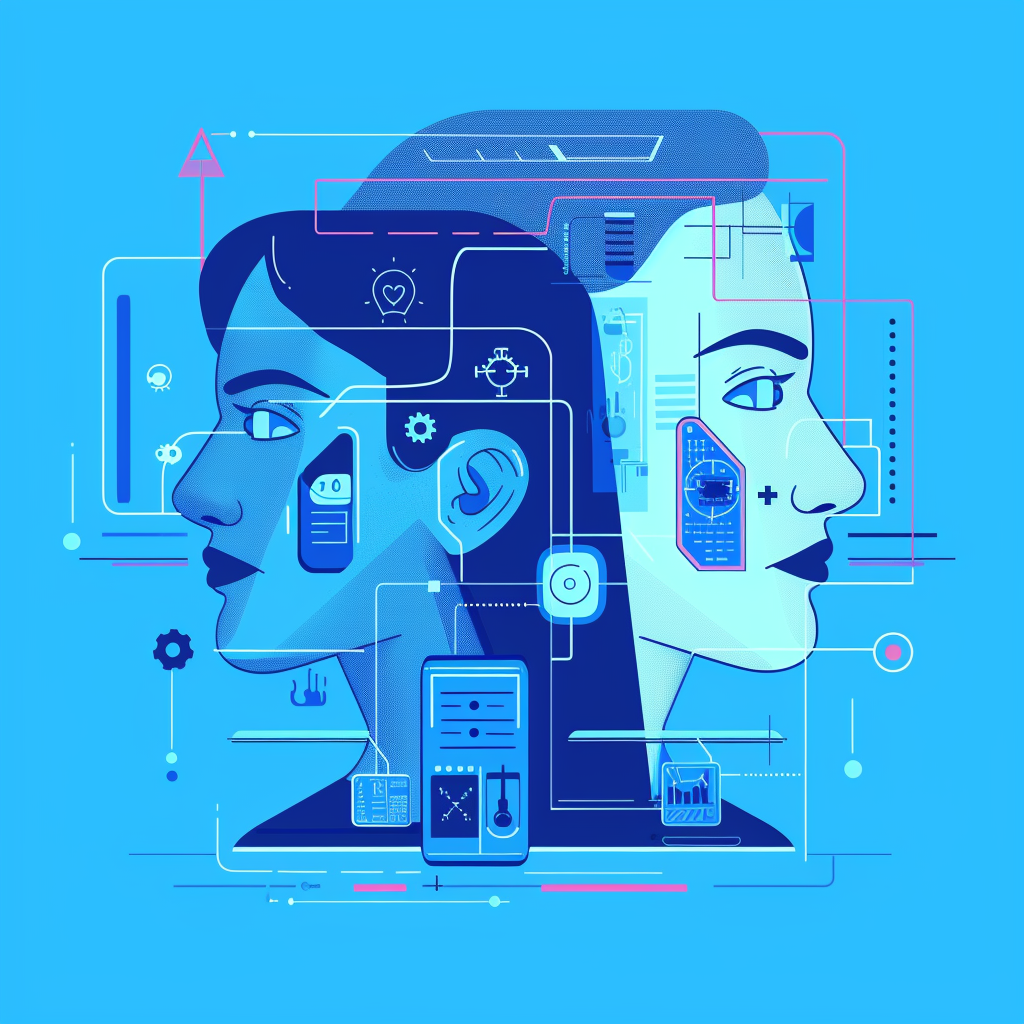While everyone is talking about AI and a sophisticated future, you are thinking about how to break into a new profession and career in software development. You are on the right path, as the market size of AI software is projected to reach $1,345.2 Billion by 2030, and new intelligent specialists will be in great demand.
The future market will be dominated by developments in deep learning and ML, industry adoption of AI-powered solutions, and the demand to automate tedious operations. Thus, it’s the right time to learn the best programming language for AI and machine learning, like Python or Java, and jump onto the AI bandwagon with us!
This article introduces the 8 best AI programming languages, including their benefits, applications, and problem-solving. Whether you are a beginner in AI programming or simply want to find out which language is better for your future business project, you are welcome to share this article and spread the knowledge.
How Does AI Programming Work?
Artificial intelligence is transforming businesses within different industries, creating the potential need for professional programmers, IT specialists, and software developers. We often say AI is like magic, but who writes the spell, and how? Let’s find out more.
AI applications, chatbots, and virtual assistants are all the result of hard work called AI programming. Developers use the codes, libraries, and frameworks of a certain programming language to write a series of instructions and algorithms. However, AI programming is a broad process and involves natural language processing, ML, computer vision, robotics, deep learning, data processing, and finally, the deployment stage.
To develop any type of AI product, it’s first necessary to choose a coding language suitable for meeting all the requirements, like scalability, level of expertise, performance, libraries, and resources. According to Wikipedia, there are more than 700 programming languages worldwide, yet the Tiobe index proves that only 265 programming languages are used by developers. Despite the large number of coding languages, only some are suitable for handling tasks in AI projects.

8 Best Programming Languages for AI
Now, we present you with our curated list of best programming languages for AI and machine learning:
Python
Python is considered one of the simplest and most highly rated programming languages used for AI prototyping, machine learning, computer vision applications, and natural language processing. For software developers, having a Python programming certification is an advantage for getting the best projects and ranking high among other developers.
Industry experts prefer Python over the rest of programming languages for its excellent application in deep learning models, neural networks, predictive models, face and image recognition, document analysis, and building ML algorithms. Worldwide use cases include:
- Dropbox uses Python code for its cross-platform support and quick app development cycle. With the vast Python libraries and extensive features, the company implemented the functionality to scale up rapidly. Now, Python runs nearly 5 million codes for the company’s business processes.
- Spotify, with more than 280 million monthly users, leverages Python for data analysis and backend services to enhance Radio and Discover applications.
Java
Java is one of the best programming languages for AI projects. AI developers mostly use this language to create machine learning solutions, genetic programming, search algorithms, neural networks, and multi-robot systems. Java’s features for AI projects are its scalability and project-oriented functionality.
Here are some of the best use cases of Java:
- Scientific Application
Java provides apps with the ability to gather statistics, manage algebra operations, and benefit from machine learning. The popular applications built on Java are MATLAB, Orca, and Mitomonkey.
- Mobile and Web Applications
Java’s platform independence and portability simplify the app’s development process for tablets, embedded systems, and smartphones. Giant company use cases include LinkedIn, Uber, and Google Earth. LinkedIn utilizes ML models to suggest the most fitting career openings to potential employees based on their skill set and past job experience. LinkedIn’s developers mostly use the open-source ML library Apache Mahout, enabling them to quickly implement algorithms written in Java code with minimal effort.
- Cloud Applications
The biggest benefit of Java for cloud development is its WORA (Write Once Run Anywhere) feature. Amazon Sagemaker is a managed service offered by Amazon Web Services that simplifies the process of deploying ML applications into production environments. It supports many different frameworks, including TensorFlow, Keras, and custom algorithms written in Java.
JavaScript
According to Statista, in 2023, JavaScript was rated the most commonly used programming language among software developers worldwide, with an index of 63.61% among respondents. But what about its use in AI and ML programming?
Although JavaScript is not number one in AI solutions and deep learning implementation, it offers excellent performance and scalability, ubiquity in web applications, and adaptable cross-platform nature. Let’s see noticeable examples of applying JavaScript in big companies:
- Facebook Messenger bots
Facebook’s artificial intelligent bots understand user queries, provide automated customer support, and handle transactions. The messenger’s user experience and interface utilize the Node.js opportunities.
- “Teachable Machine” from Google
With JavaScript’s ML5.js high-level ML library, Google has implemented a project that allows training a machine learning model directly in the browser without coding. Such technology is helpful for individuals without coding skills to learn AI technology.

C++
The C++ programming language is well-known for its high execution speed, making it an ideal choice for any developer of AI applications, especially when performance is a critical metric. This type of language allows AI programming to run closer to the system hardware, allowing for more accurate control over system resources.
C++, just like Python, has an extensive range of AI applications and is used by industry experts in giant companies like Google for software development:
- Image and Video Processing. C++ is suitable for image and video-related AI projects, including face detection, object recognition, and segmentation.
- Robotics and Automation. C++ is perfect for handling real-time data sets and includes robotics libraries that provide an extensive range of algorithms for task automation and robot control.
- Natural Language Processing. It has been proven to have good results in NLP-related AI projects, such as text classification, machine translation, and sentiment analysis. The NLTK library provides NLP algorithms to implement large-scale AI projects.
A good example of applying C++ is the TensorFlow library from Google, which is powered by this programming language.
Julia
Julia, which was released in 2012, has seen a rapid increase in demand among web developers and enterprises, with over 40 million downloads. According to the GitHub download page, it is rated with 44.3K stars, proving it’s worth learning and well-supported.
According to Julia’s website, it can be used in various industries:
- Pharmaceutical Development. Julia is widely used in the medical field due to its packages BioJulia and Pumas, which are perfect for modeling and developing bioinformatics infrastructure and drug trial qualifying. For instance, the pharma giant company Pfizer successfully used Julia to simulate new therapies.
- Astronomy and Supercomputing. Julia’s programming speed and the AstroLib.jl package are super useful in astronomy and astrophysics. A good example of its application is the Celeste project, where computer scientists and data engineers used Julia to develop a parallel computing method, resulting in the production of 188 million astronomical objects.
- Network Security. Here, the industry benefits from Julia’s ability to write code in a single language. Cisco specialists use Flux.jl library to improve network security and analyze hidden patterns.
- Robotics. Julia is widely used by MIT to train robots to walk, climb stairs, and learn other difficult skills.
Swift
Swift is the dominant programming language in the development of Apple’s iOS and macOS, but it is gaining popularity in cloud-based programming and machine learning. Swift code is clear and easy to write and is designed to be easy to read and debug.
Although Swift is a more Apple-oriented programming language, its user-friendly interface distinguishes it from other AI programming languages. Swift can be applied to create ML-powered iOS applications with Create ML, another powerful tool from Apple.
R
The R programming language, developed in 1992, is widely recognized for its statistical capabilities, making it an ideal choice for data scientists to analyze and manipulate large volumes of statistical data. R is supported by the R Foundation for Statistical Computing.
R programming language comes with a wide set of statistical and graphical techniques for:
- Linear Modeling
- Nonlinear Modeling
- Statistical Tests
- Classification
- Clustering
R is recognized by data scientists from such companies as Facebook, LinkedIn, Bank of America, Google, and Uber for analyzing trends and patterns, learning user history, embedding visual graphics, and forecasting.
Prolog
Prolog is a programming language invented in 1971 specifically for developing logic-based AI applications. What’s interesting about this programming language is that an IT specialist can use an installed interpreter that uses specified rules and facts to automatically offer solutions to problems. Accordingly, in Prolog, programs are made up of two main components: facts and rules. Major Prolog use cases include:
Natural Language Processing. CAT2, programmed in Prolog, is a unification-based natural language processing system that finds its application in multilingual machine translation and automatic translation.
Knowledge-based Systems. AGATHA Electronic Diagnosis Knowledge-Based System written with Prolog can diagnose complex circuit boards.
Intelligent Search in Large Databases. The built-in query feature can be used to make complex and efficient queries in large databases.
| Programming Language | Why Is It Good for AI and ML?Unique Advantages: |
| Python | Simple and versatile – ideal for beginners;
Platform-independent; Vast ecosystem of Python libraries and frameworks (TensorFlow, PyTorch, Tokenizers, Hugging Face, etc.); Extensive community support. |
| Java | Seamless integration into enterprise applications;
Powerful libraries liotherning4j; Strong security technology; Perfect for large-scale and production-grade machine learning projects. |
| JavaScript | Extensive libraries for AI development (TensorFlow, Caffe, Boost);
Greater control over memory management; Has extensive developer community; Good for browser-based and web-centric machine learning projects. |
| C++ | High execution speed and control over system resources;
A large community of developers and libraries; Ideal for developing large AI applications. |
| Julia | Just-in-time (JIT) compilation;
User-friendly syntax; Optimized for statistical modeling; An innovative ecosystem of libraries like Flux.jl; |
| Swift | Easy to write, read, debug;
Safe by default; Has sensible memory use; Compiles to native machine code. |
| R | Vast statistical packages and libraries (caret, ggplot2);
Oriented for statistical modeling and research projects; Strong data visualization for two-dimensional graphics. |
| Prolog | Good in pattern matching and automatic backtracking;
Broader Semantic Web; Used explicitly for symbolic reasoning, problem-solving, and pattern matching. |
Programming Languages to Avoid For AI
Although good, skilled programmers can write AI and ML programs in almost any programming language, some languages are less suitable and won’t give as much flexibility and features as necessary to implement the project. Let’s look at some of them:
- PHP. It is a low-level scripting language that is mainly used for web development. In the case of AI and machine learning programming, it doesn’t have a rich ecosystem and machine learning libraries.
- Rust. Rust is another scripting language for web development. Its features and async programming model make it more suited for building web servers, backend services, and APIs. Interestingly, Rust was primarily developed for the Firefox browser, but its great efficiency led to further application in game development.
- C. It is a popular low-level language among system administrators and embedded system developers. However, it is not well-suited for AI projects because it lacks many high-level features.
- Fortran. This programming language is most suitable for scientists and engineers. However, it’s hard to learn and doesn’t provide many quality-of-life features, making development difficult.

Which AI Programming Language Is Right For You?
While there are numerous programming languages suitable for ML and AI development, you have to sort out the primary goal of your business scope, development project, or self-learning initiative. Although it is a challenging decision, answering the following questions can help:
– What are the key project requirements?
Write down the specific needs of the development project and choose the programming language accordingly. Consider performance, scalability, integration, data analysis features, and whether it can be easy to grasp the programming tool.
– Programming system: large or small?
Read more about the available libraries, frameworks, and tools for the language. A strong working ecosystem will influence the project’s performance and bring about more possible solutions.
– Can you get timely and effective programming language support?
Last but not least, check out the situation with community support, as occasionally, you might face issues with programming language. Does the developer have a vast community and support activities?
Conclusion
With the rise of software development trends, more individuals are learning AI programming, and web development companies are enhancing their scope of service. There is a vast choice of AI programming languages in machine learning, natural language processing, and deep learning algorithms across the majority of industries. To prioritize between the programming languages, we recommend learning AI use cases from such companies as Netflix (recommendation system built on Python), PayPal, and Uber and deciding on the best AI programming language for your future cases.
If you have more questions or are looking to hire an experienced team, you are always welcome to contact us to develop AI software and maximize your business growth.





